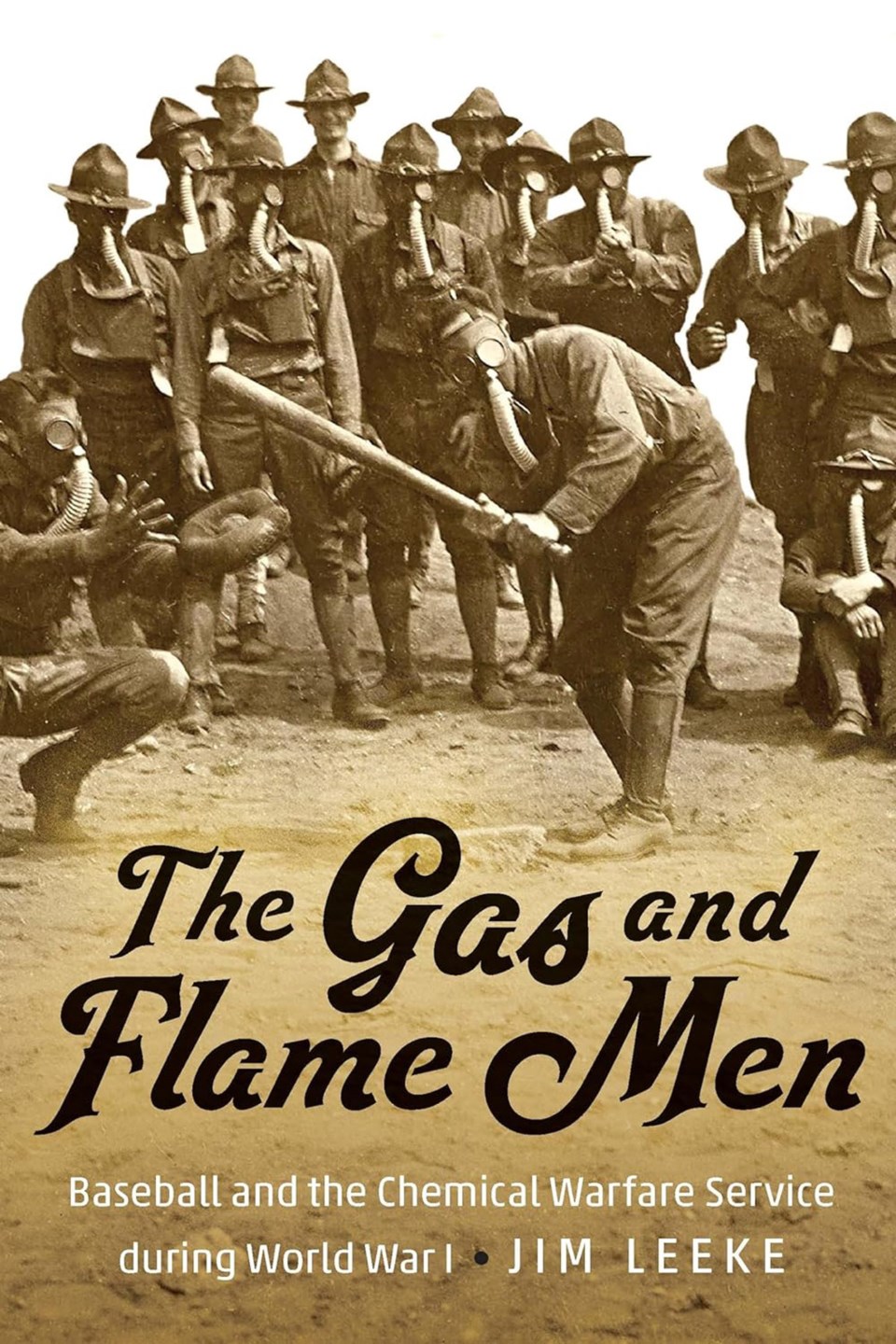YORKTON -
Increasingly I find myself wanting sports books which recognize athletics do not exist in a vacuum, and in that recognition, write stories that tell of the larger world around a given sport moment.
A fine example of that idea is The Gas and Flame Men: Baseball and the Chemical Warfare Service during World War I by Jim Leeke.
This is a book that certainly has elements of baseball, yet readers quickly recognize the sport is really quite secondary to the time given the First World War is front page around the world.
What Leeke does in his 256 page book from www.nebraskapress.unl.edu is use a handful of familiar baseball names – Christy Mathewson, Branch Rickey, Ty Cobb, George Sisler among them – to write about a very select, critical and historically significant part of U.S. forces in the war the Chemical Warfare Service.
“When the United States officially entered World War I in 1917, it was woefully under-prepared for chemical warfare, in which the British, French, and Germans had been engaged since 1915. In response, the U.S. Army created an entirely new branch: the Chemical Warfare Service. The army turned to trained chemists and engineers to lead the charge—and called on an array of others, including baseball players, to fill out the ranks,” details the publisher website.
“The Gas and Flame Men is the first full account of Major League ballplayers who served in the Chemical Warfare Service during World War I. Four players, two club executives, and a manager served in the small and hastily formed branch, six of them as gas officers. Remarkably, five of the seven—Christy Mathewson, Branch Rickey, Ty Cobb, George Sisler, and Eppa “Jeptha” Rixey—are now enshrined in the National Baseball Hall of Fame at Cooperstown, New York.
“The son of a sixth Hall of Famer, player and manager Ned Hanlon, was a young officer killed in action in France with the First Gas Regiment.
“Prominent chemical soldiers also included veteran Major League catcher and future manager George “Gabby” Street and Boston Braves president and former Harvard football coach Percy D. Haughton.
“The Gas and Flame Men explores how these famous baseball men, along with an eclectic mix of polo players, collegiate baseball and football stars, professors, architects, frankly prominent social figures all came together in the Chemical Warfare Service (CWS).”
Given this is a sports article, it was the baseball aspect which initially caught my attention, but frankly the background on the players in terms of the sport soon seems rather frivolous to the far more interesting look at the CWS.
While a lot of years have passed since I sat in a school history class I do recall that it was the Germans who first used gas.
What I do not recall is how quickly Allied forces began doing the same – and in massive amounts.
The first use by the Germans was in April 1915 at Ypres.
“Pretty soon after that first attack everybody was using it,” said Leeke in an interview with Yorkton This Week.
Leeke said the initial use by the Germans was so successful, it actually even surprised them.
“From then on everybody was scrambling” and soon every army in the conflict was using an ever evolving range of deadly has and ever changing delivery systems, he said.
So where did the idea for a book combining ballplayers and gas warfare come from.
Leeke explained he has “written other books about World War One and baseball,” and in the process of researching those came across the names of the Hall of Fame ballplayers who served in the ‘gas and flame’ units.
“It surprised me. I didn’t expect ballplayers to be in that sort of service . . . in chemical warfare,” he said.
The book of course has some interesting tidbits not associated with the dangers of gas warfare. One that stands out for me follows as checkers was one of the first board games I learned from my grandfather.
Leeke wrote; “All eyes of soldiers Wednesday turned toward Ohio, from whence will come Christy Mathewson, world’s famous baseball player, who will spend several days at Camp Sheridan next week,” the Cincinnati Enquirer said in early January.
“Mathewson has notified the Y. M. C. A. that he will come to entertain the soldiers in a checker tournament and in lectures.”
“Matty was a champion of the popular board game, vice president of the American Checkers Association, and one of the best amateur players the country. He could easily play and win several games at once.
“Asking the Reds manager to play checkers with Sammies in a YMCA hut was like asking Enrico Caruso to join a singalong. But Matty did it gladly. “He loved checkers almost as dearly as he loved baseball,” the New York Times recalled years later, “and many were the games he had with experts from all over the country who came to play with him.””
Leeke has a number of little ‘nuggets’ he’s included in the book, testament to his effort as researcher, a part of the process of creating such a book he notes is his favourite element of creation.
“You wander around looking here and liking them and occasionally finding gems,” he said.
But how about the broader interest of readers?
“It’s been very good,” said Leeke, adding he has already done a number of media interviews on the book. “. . . I think people respond to the story.”
That makes sense in as much as Leeke did a nice job of keeping the book away from being too ‘scholarly’ in approach. He said he owes that to his background as a newspaper journalist relying in a similar style to satisfy who he believes are similar readers.
Baseball fans will find joy here. Military readers too will find interest. Even generalist readers will enjoy as the book is only 256 pages and you will learn new things. Great for a summer read.

